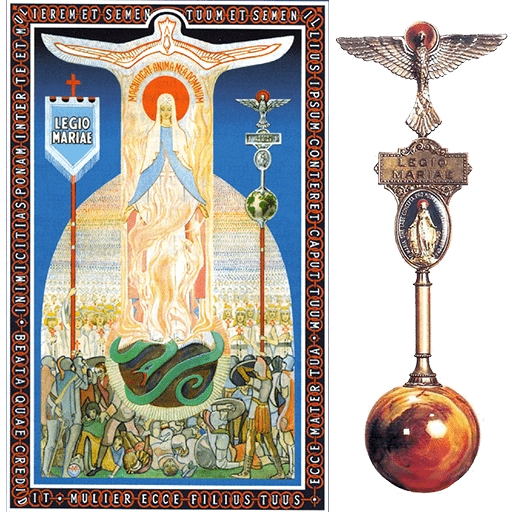June 2019 Allocutio
The Holy Trinity – Our pattern of unity
Fr. Liam Ó Cuív
Today we celebrate the feast of the Most Holy Trinity.
The Catechism of the Catholic Church tells us that, “The mystery of the Most Holy Trinity is the central mystery of Christian faith and life. It is the mystery of God in himself. It is therefore the source of all the other mysteries of faith, the light that enlightens them. It is the most fundamental and essential teaching in the “hierarchy of the truths of faith”. (CCC 234).
The Unity of the Church is centred with the Trinity. There is one God who exists in three persons; there is unity and diversity. This is our God and the Church is a reflection of God. The Church is united; there is one Holy Catholic Church, but it is diverse. Christianity in Africa often looks rather different to a congregation in the North of Europe and both are different to Christian assemblies in India – but they are all Christian.
This unity in diversity which exists in the Church, the Body of Christ, is contained in the Latin word communio, which we speak of as ‘communion’ and translates the Greek word Koinonia (sometimes translated as ‘fellowship’ in English) found in the Acts of the Apostles to describe the unity found in the early Church after the outpouring of the Holy Spirit at Pentecost.
In a letter to Bishops in 1992 the then Prefect of the Congregation for the Doctrine of the Faith, Cardinal Ratzinger, later Pope Benedict XVI stated, “The concept of communion (koinonía), which appears with a certain prominence in the texts of the Second Vatican Council, is very suitable for expressing the core of the Mystery of the Church, A deeper appreciation of the fact that the Church is a Communion is, indeed, a task of special importance, which provides ample latitude for theological reflection on the mystery of the Church, “whose nature is such that it always admits new and deeper exploring”.
In today’s Church there exists today a real danger of division into different factions. This, of course, is not new. St Paul wrote in one of his letters, “it is clear that there are serious differences among you. What I mean is this: every one of you is declaring, ‘I belong to Paul,’ or ‘I belong to Apollos,’ or ‘I belong to Cephas,’ or ‘I belong to Christ’. Has Christ been split up?” (1 Cor. 1:12).
In today’s world we can speak of cultural wars between those who might be described as conservatives and liberals, though all such labelling can be unhelpful. One priest who has worked all his life in the field of Liturgy has spoken of his noting “a certain mood of reaction and nostalgia for ‘the good old days’ coming into play”.
There will always be people of contrasting points of view in the Church around the Liturgy and many other matters. However, they will only contribute to the building up of the Church when they are able to speak to one another in love in their common seeking of the truth.
At the beginning of this century Pope Saint John Paul II stated in his Novo Millennio Ineunte that that the great challenge facing us this Millennium is to make the Church the home and the school of communion: He went on to expound on this and said: A spirituality of communion indicates above all the heart’s contemplation of the mystery of the Trinity dwelling in us, and whose light we must also be able to see shining on the face of the brothers and sisters around us. A spirituality of communion also means an ability to think of our brothers and sisters in faith within the profound unity of the Mystical Body, and therefore as “those who are a part of me”. (43)
If as Christians and as members of the Legion of Mary, we are called to be a true reflection of the Holy Trinity and to lead all our brothers and sisters to share in the Life of God, Father, Son and Holy Spirit, we must be a true reflection of this unity.
We must realise that we bear a great responsibility. Criticism by any Catholics and especially by any legionary is not acceptable. Not only must we never divide the Church; to do so is to do the work of the devil. We must make it our aim to help all our brothers and sisters to maintain the unity of the Church and to help them see that the Church is a Divine institution, enjoying the promise of Christ to be with her until the end of time, and not a political party or a purely human institution.
Cardinal Joseph Ratzinger, now Benedict XVI in the aforementioned Letter said: “The Blessed Virgin Mary is the model of ecclesial communion in faith, in charity and in union with Christ. “Eternally present in the mystery of Christ”, She is, in the midst of the Apostles, at the very heart of the Church at its birth and of the Church of all ages.
May Mary, the mother of Jesus, who was present in prayer in the upper room with the disciples, assist us by her prayers that we may maintain the unity for which Christ prayed: “Father, may they all be one… that the world may believe that you have sent me”. (John 17: 31).
